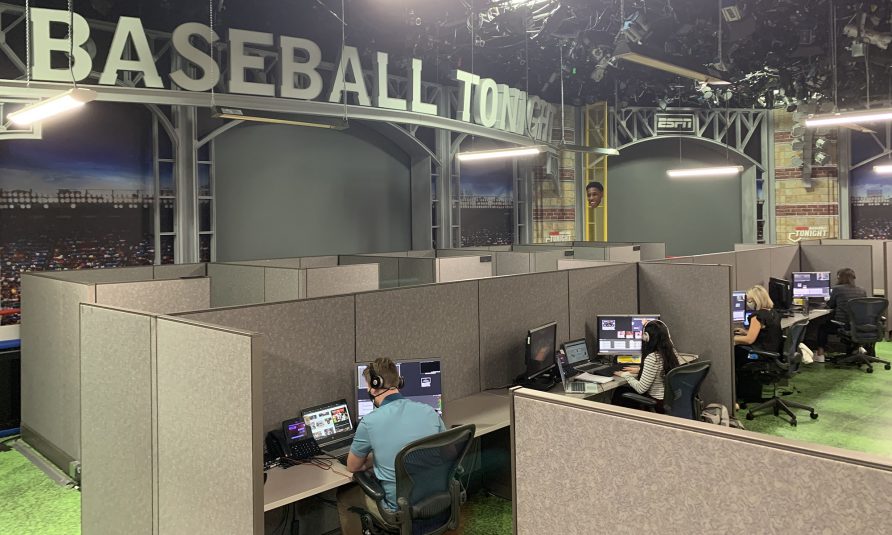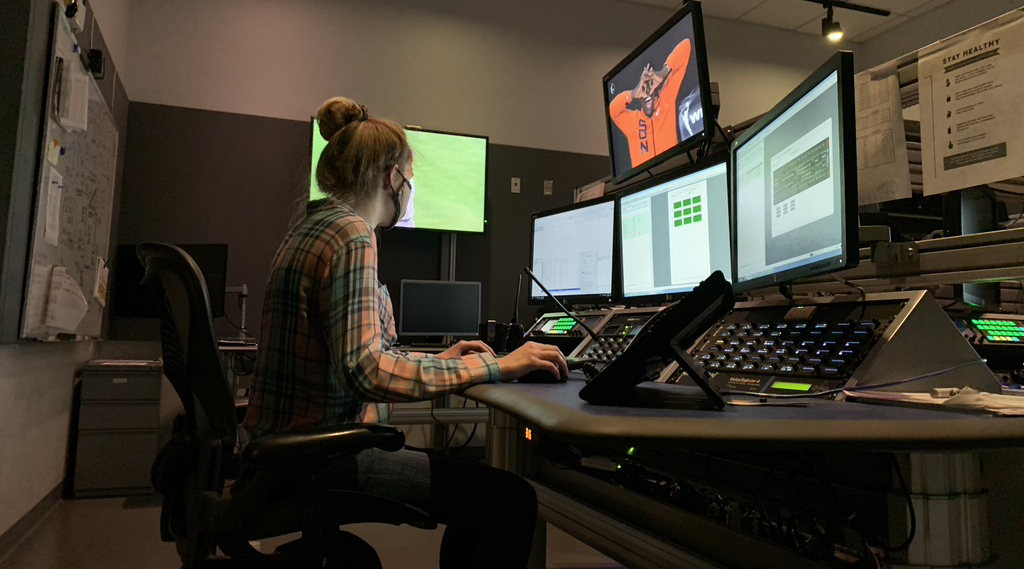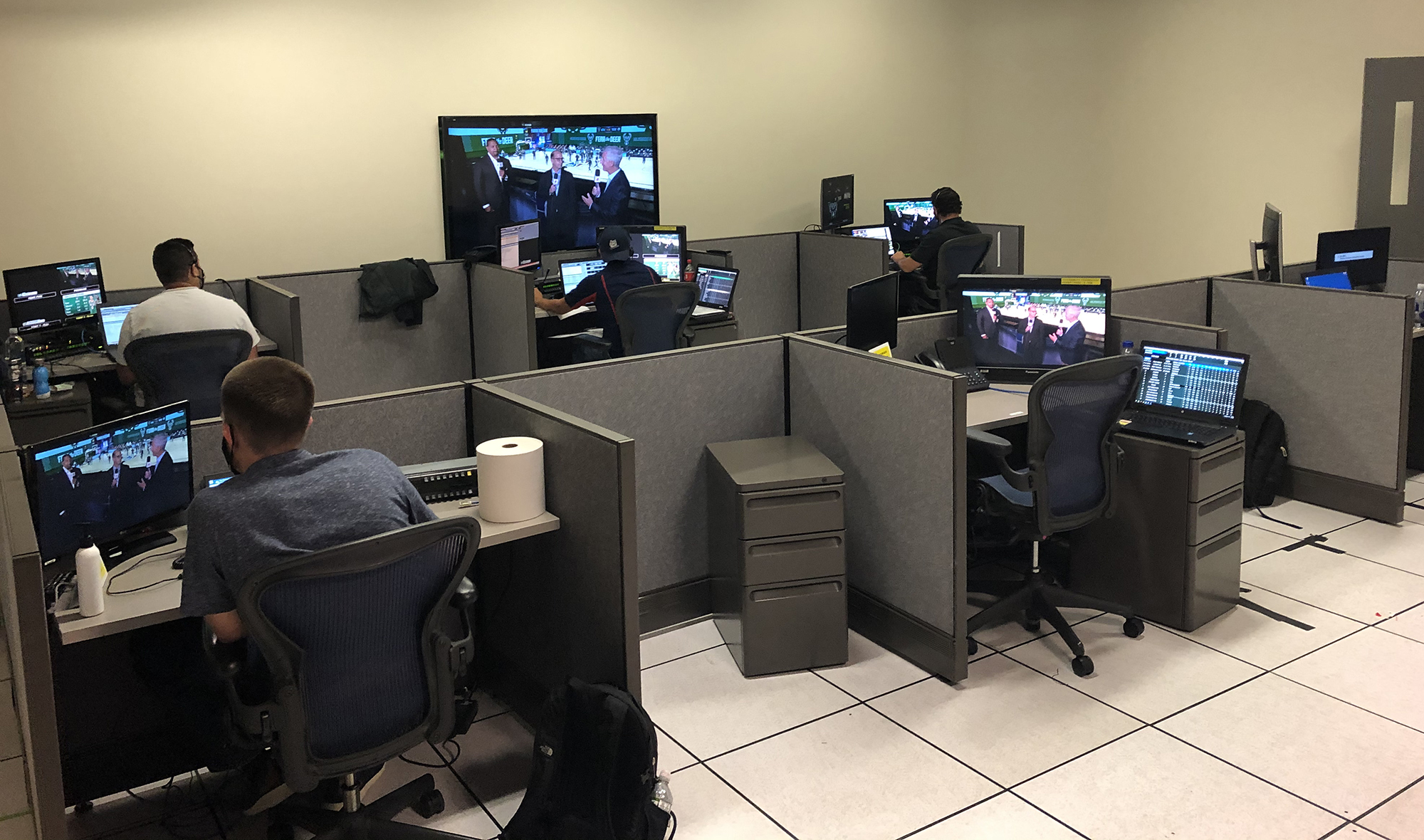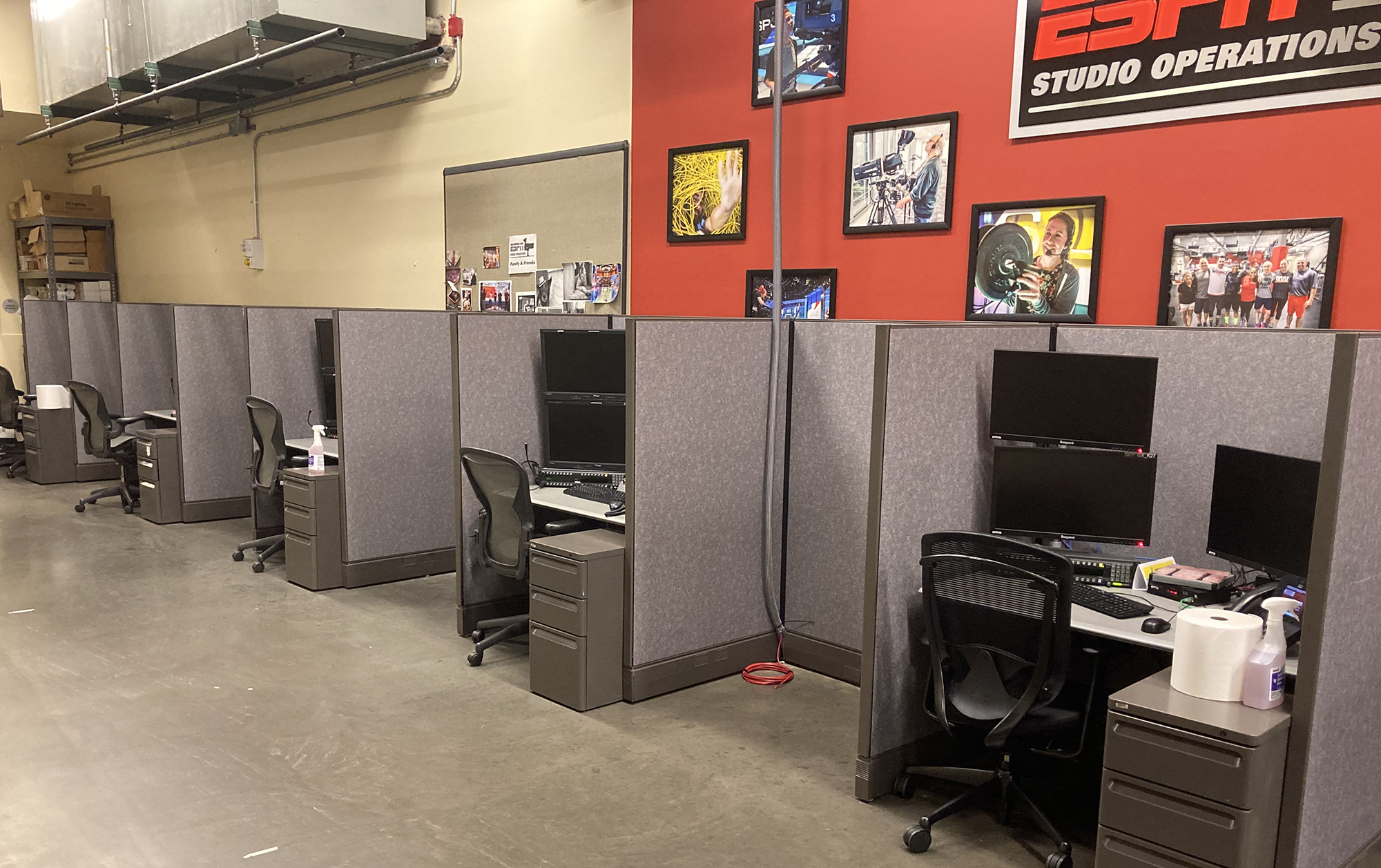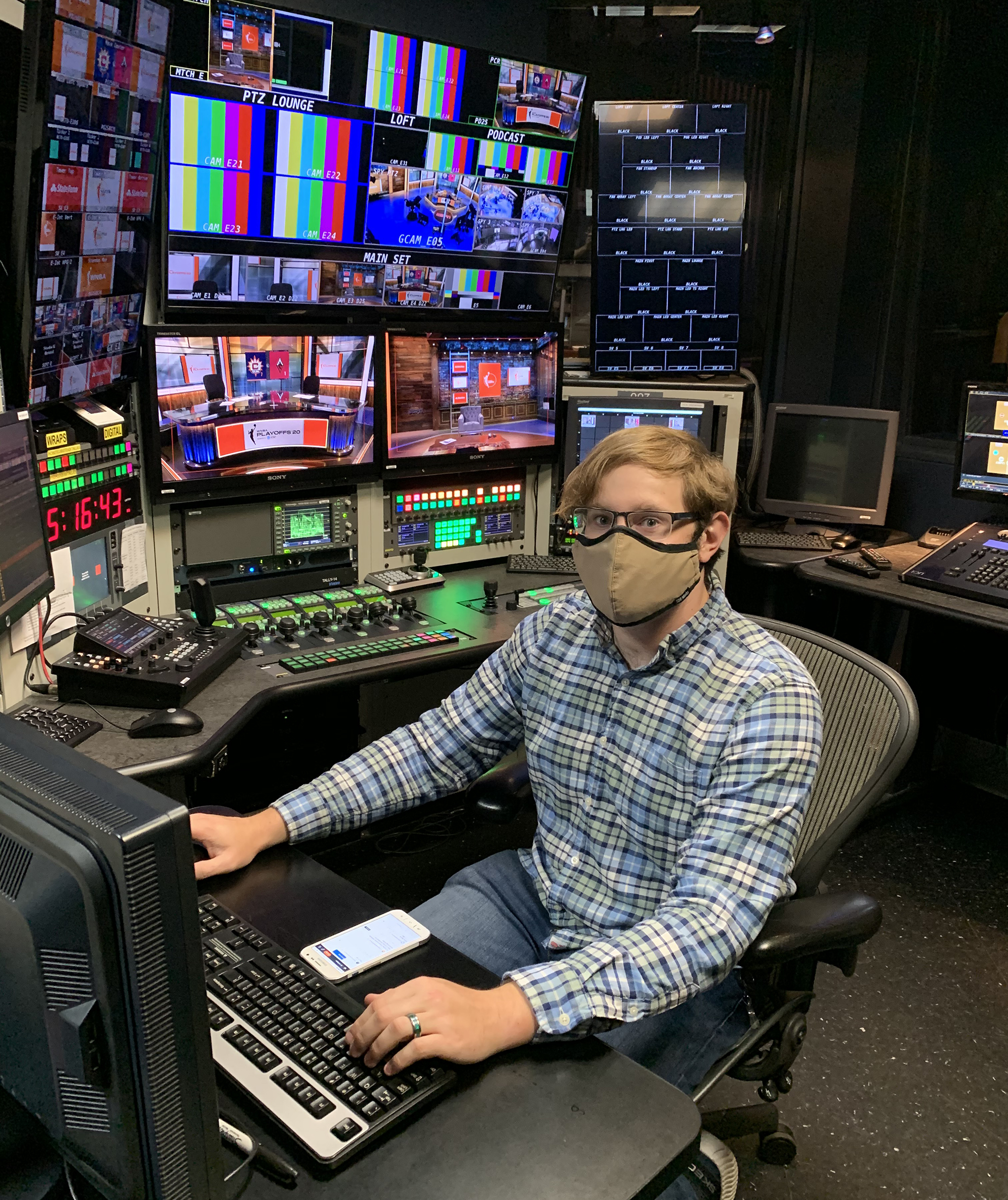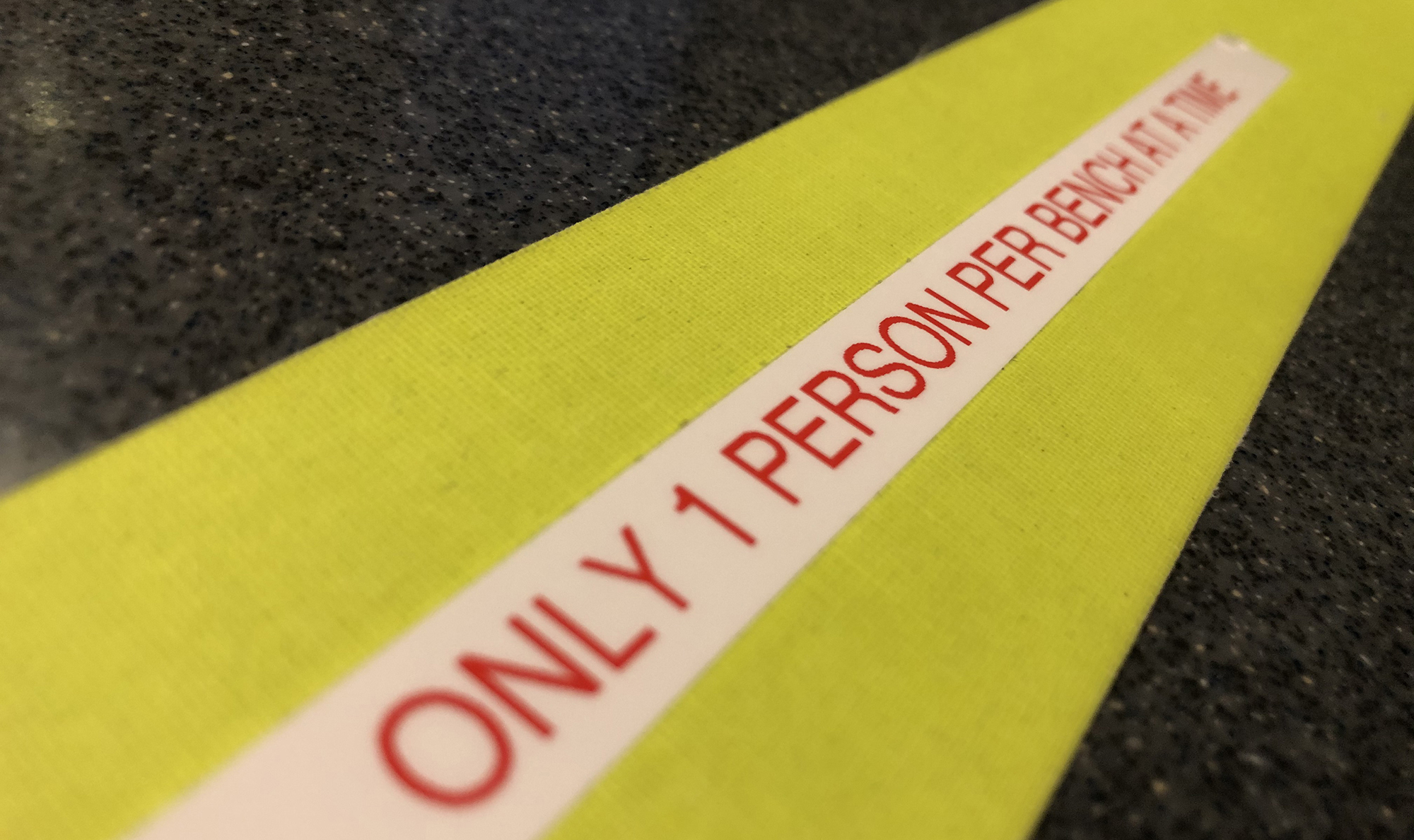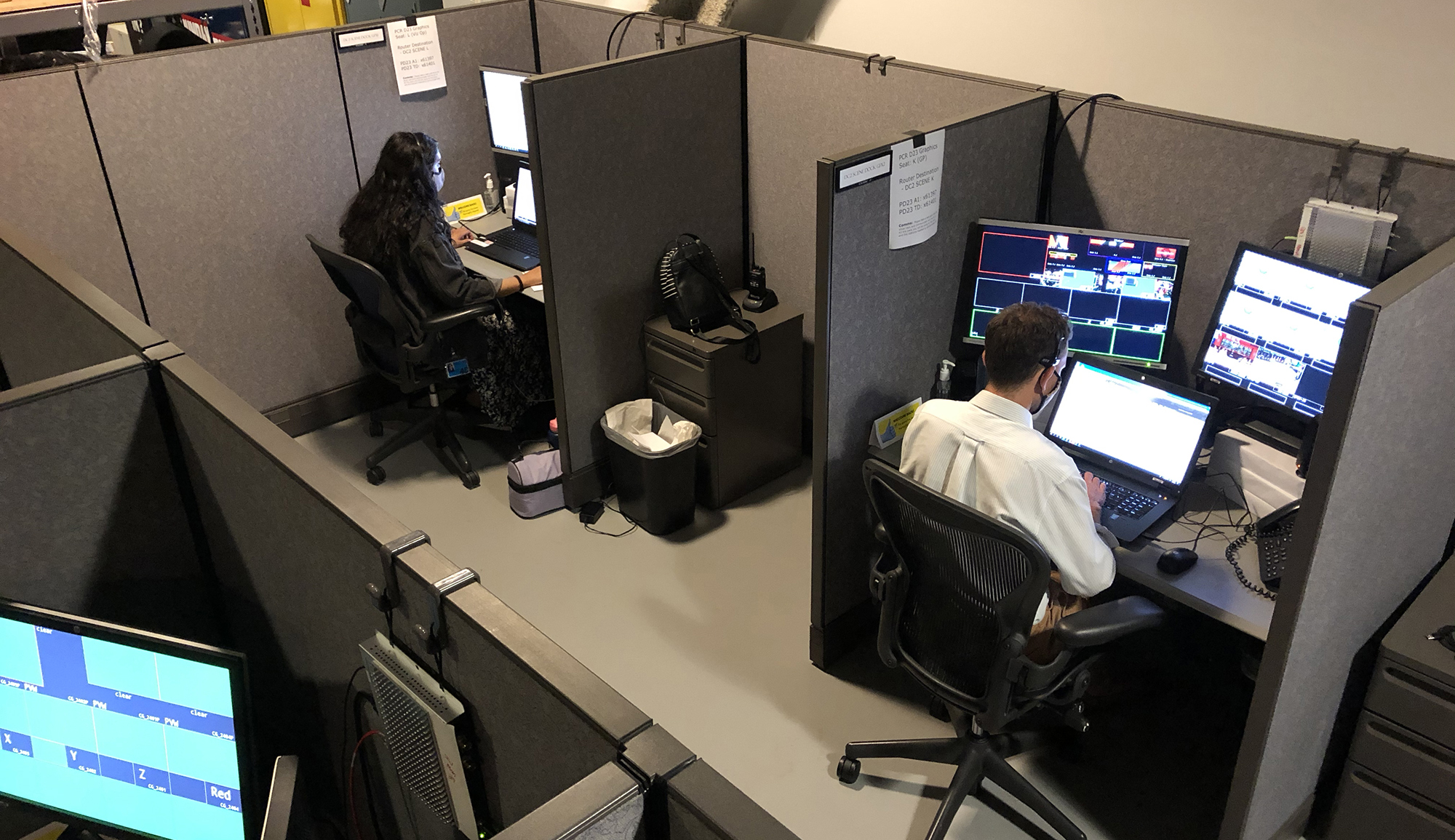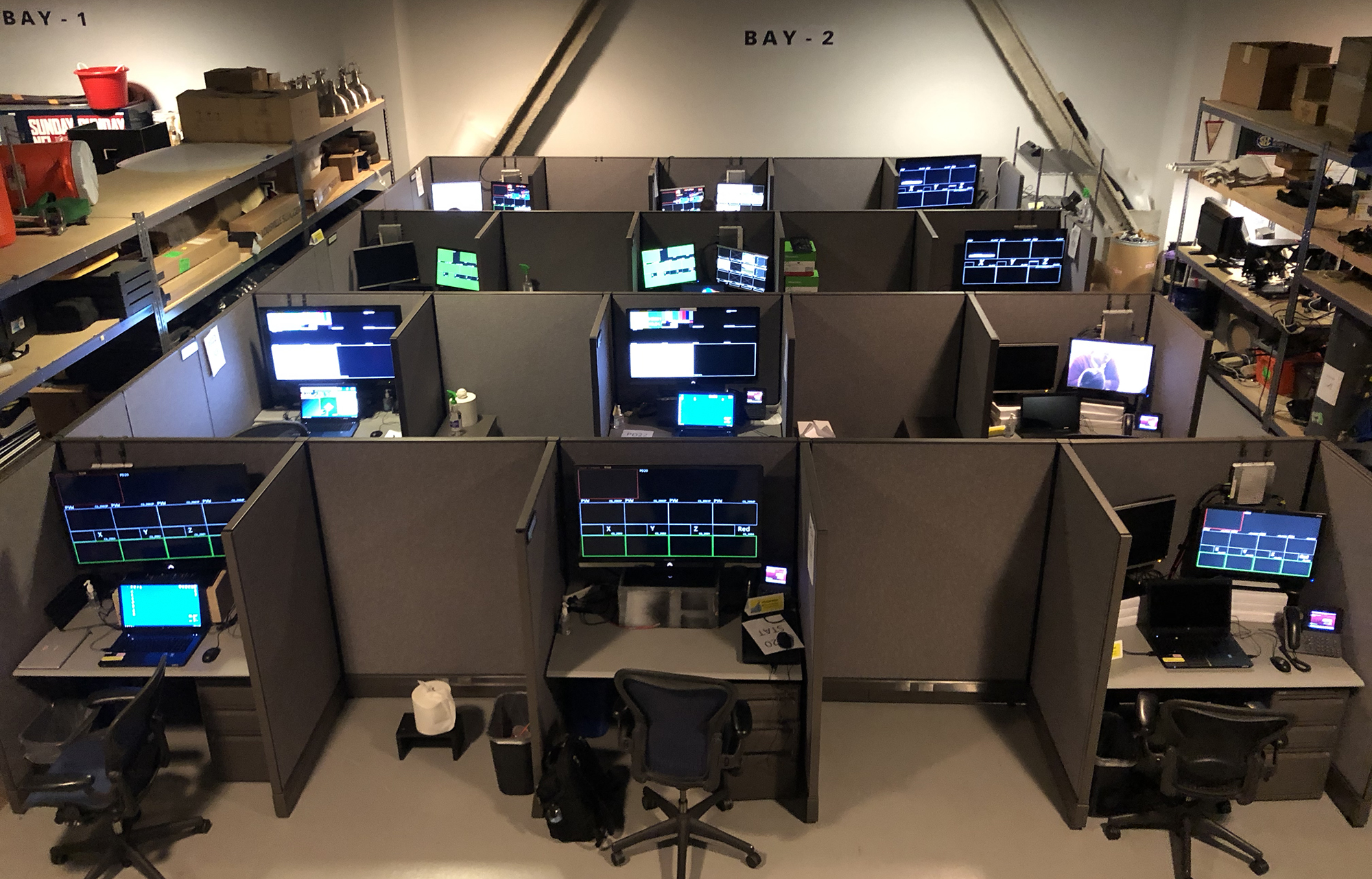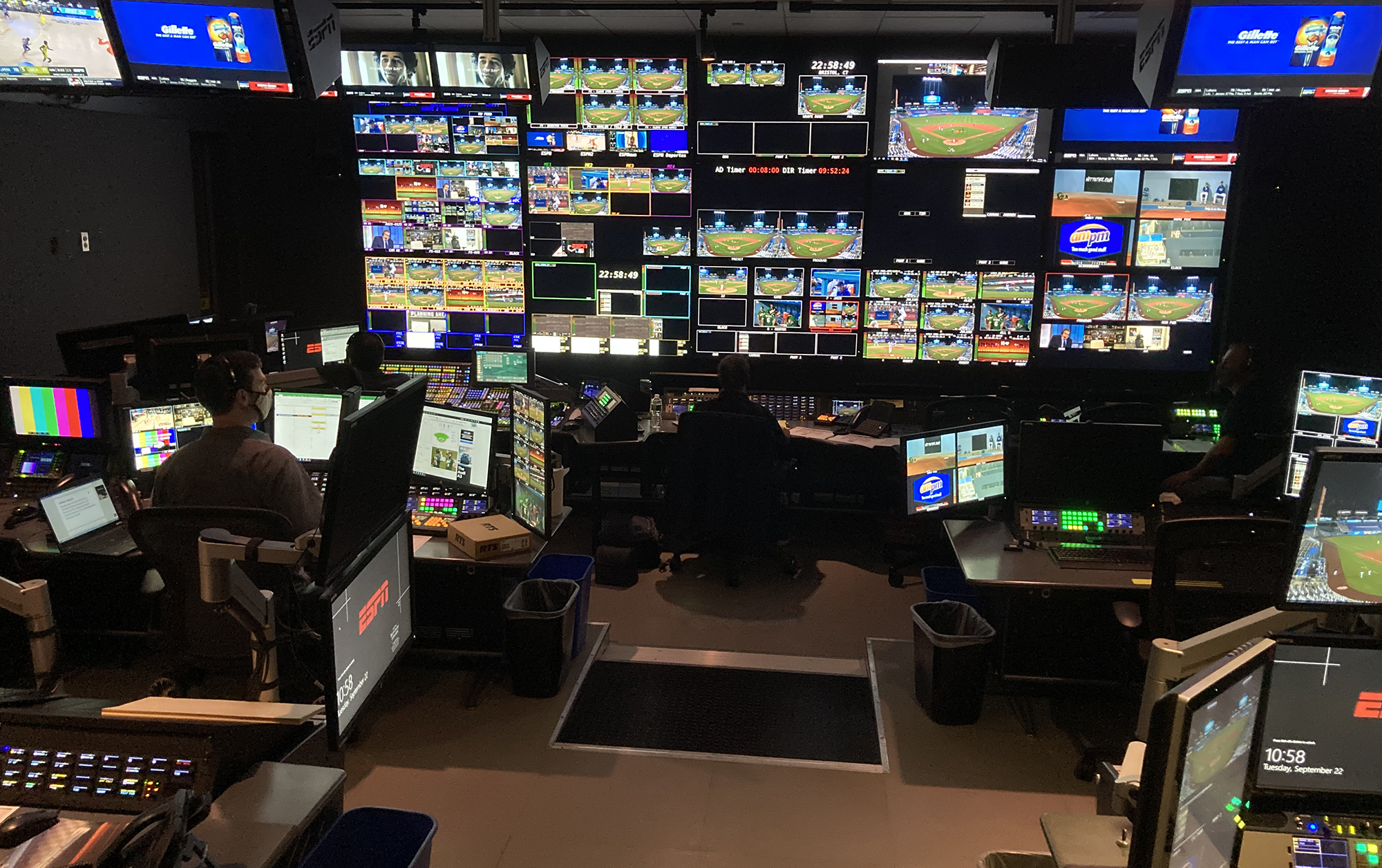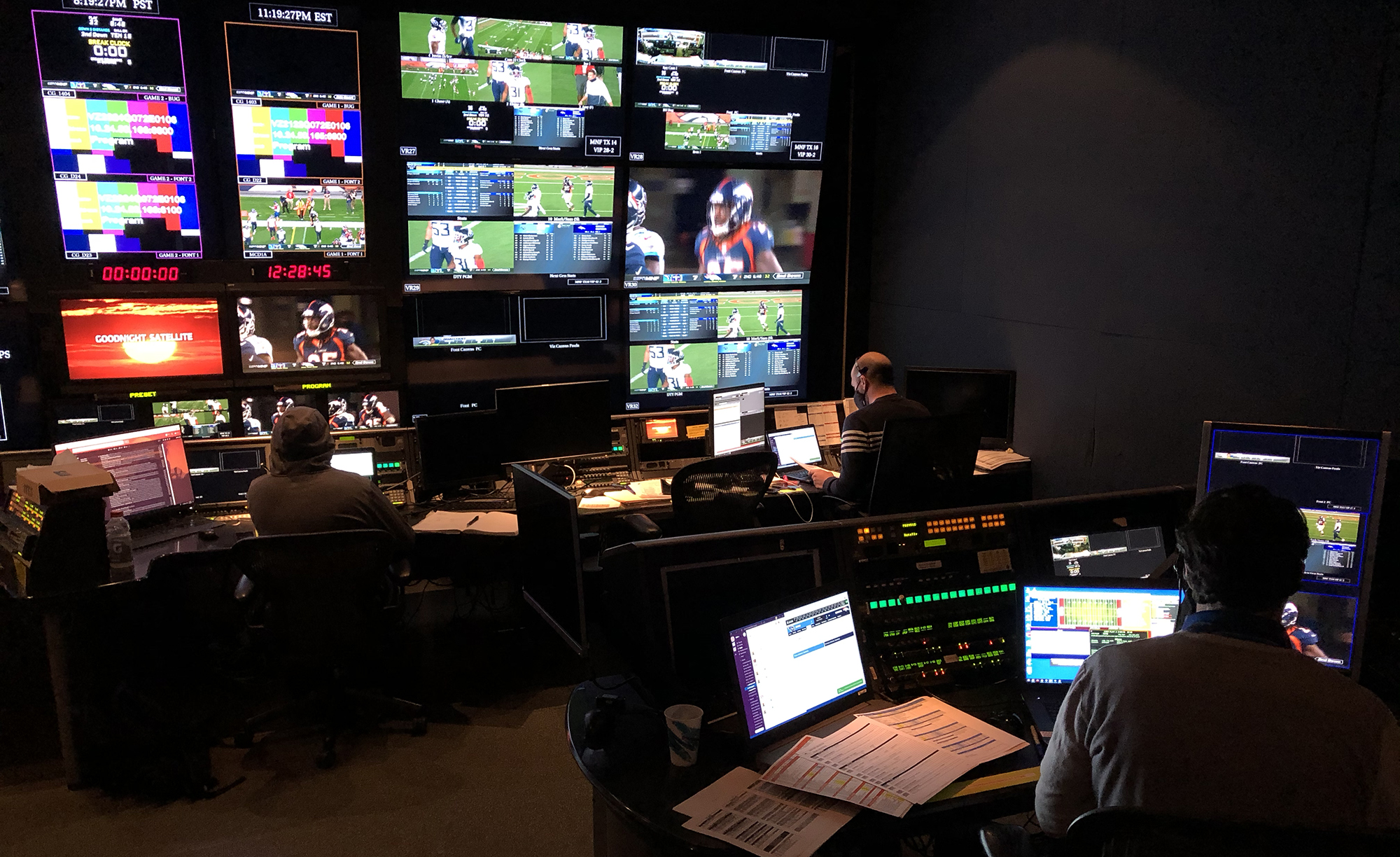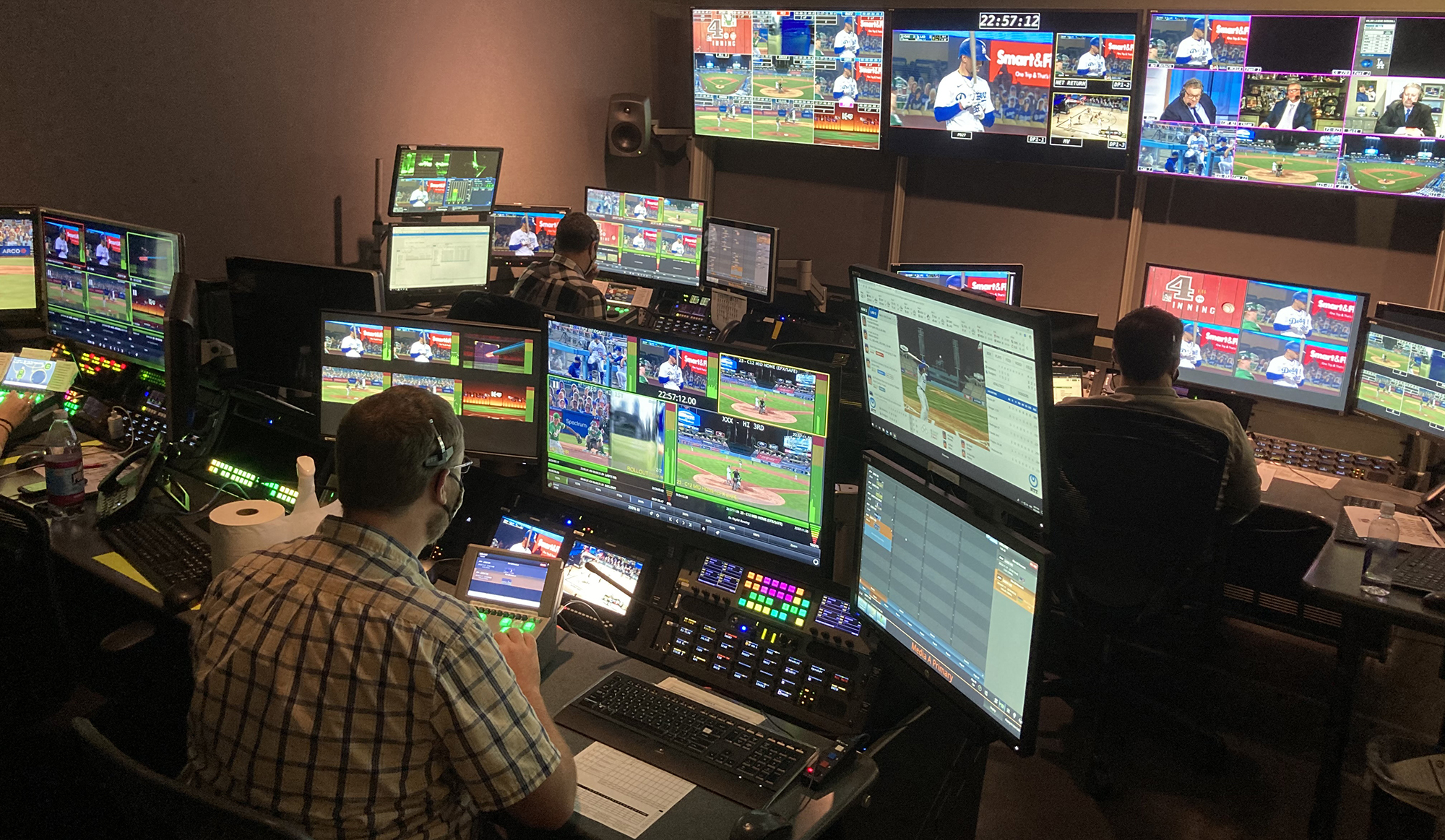Behind the Scenes of ESPN’s Studio Operations in the Age of Coronavirus
REMI, Live-From-Home models keep live productions on the air
Story Highlights
Since the pandemic first shellacked the sports business in mid March, no sports-media entity has produced more live studio programming than ESPN. From the early days of Zoom-enabled talk shows to the return of large-scale in-studio production and the relaunch of live sports productions, ESPN’s studio- and network-operations team never waved the white flag and has continued producing live content through it all — both in the control room and remotely.
Having produced thousands of hours of studio programming over the past seven months, ESPN control rooms are now serving as the home of hundreds of REMI (remote integration) productions of live game broadcasts. And ESPN has done it all while putting the health and safety of its crew above all else.
“The number-one priority from the onset of the pandemic to today has been to keep our people safe,” says ESPN SVP, Production Operations, Stacey Fitch. “Our amazing team pivoted very quickly and implemented innovative workflows and technologies that have not only helped us deliver the highest level of production but also keep our employees safe, both on campus and at home.”
The Early Days: Staying On-Air and Ramping Up Remote Editing
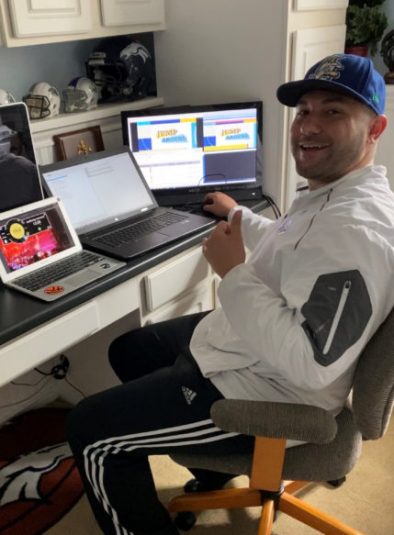
ESPN on-air specialist Anthony Lorusso operates a Vizrt graphics system remotely from his home (credit: Anthony Lorusso/ESPN)
When the sports world ground to a halt beginning with the NBA on March 12, ESPN stayed on-air throughout the chaos to continue reporting on the potential impact of each event postponement and cancellation. Although ESPN subsequently suspended production on a handful of its studio shows, it continued with its studio operations, producing live programming throughout the day despite a dearth of actual competition.
While many networks were forced to nix live programming almost entirely during the early days of the pandemic, ESPN’s operations and technology teams were able to adapt quickly to keep SportsCenter, Get Up, First Take, and NFL Live on the air (as either live or quick-turnaround productions). Much of this studio content was produced remotely, with 75+ on-air talent working from their respective homes across the country and relying on IP-based camera systems controlled remotely from Bristol. In addition, several ESPN Radio shows — including Golic and Wingo and The Dan Le Batard Show With Stugotz — were broadcast in audio-only format on ESPN networks, thanks to remote audio kits implemented in the hosts’ homes.
“The great thing about my team is, we all work together so well,” says Fitch. “At the onset of the pandemic, my senior staff met daily to talk about shows that were coming back, safety protocols, and guidelines that were literally changing by the minute. And Bristol, Charlotte, Los Angeles, Washington, and all of the facilities were on those calls. I couldn’t be more grateful and appreciative of this team. They have always had a very ‘get it done’ mentality: no matter the challenge, they are going to figure it out.”
In addition to studio operations, within two weeks of the initial lockdown, ESPN was able to provide 90% of editors the ability to work remotely by accessing workstations on campus via IP. This included editing teams that work on studio shows, marketing campaigns, features, and long-form specials; many team members are located across the country.
“We use a variety of tools to get that editing done remotely, and they have proved to be extremely valuable,” says Fitch. “From an edit-operations perspective, it was key to get that going again just two weeks after the lockdown, because it helped drive all the other [content] we were doing.”
Live From Home: Talent and Crew Contribute Remotely
By early April, ESPN’s Live From Home production model was in full swing, allowing both on-air talent and crew to produce live studio shows from the safety of their respective homes. The Live From Home remote-production workflow was developed by a committee comprising more than 30 ESPN staffers from the company’s Creative and Studio Direction, Production, Production Operations, Remote Production Operations, and Technology departments. Their efforts resulted in the launch of dozens of at-home studios and remote-commentary kits for talent, along with a full REMI production workflow that allowed studio-show crews to access automated control rooms from their homes.
ESPN’s Live From Home kits quickly became the backbone of the network’s studio operations with reduced staffing measures in place at ESPN’s Bristol, CT, campus. Although several shows were still being hosted out of the Bristol studios, nearly all analysts and reporters were outfitted with robust studio facilities at their homes to enable them to contribute to ESPN programs.
“We spent a number of the [early] weeks keeping SportsCenter on the air from campus at key times of the day, while also keeping employees safe,” Fitch notes. “But, at the same time, we were implementing all kinds of new at-home workflows.”
In addition to the at-home studios and commentary kits, ESPN began using Simply Live ViBox multicamera production systems and other automated-production resources at its Bristol, Charlotte, and Manhattan (Seaport) facilities to create a fully REMI (remote-integration) production workflow. Shows like The Jump used the ViBox systems, along with Unity intercom app, and TVU transmission to allow the hosts and crew to work 100% from home.
“Between these two Live from Home [models], we were able to execute a number of studio shows without having people on campus,” says Fitch. “And then we continued to grow it from there. [For example,] since March, the Unity Intercom system has scaled considerably to hundreds of channels supporting shows and events across multiple platforms.”
Fitch also notes that one of the most significant challenges (and highlights) of working remotely proved to be training staff on the new workflows.
“We really reimagined training and development by engaging staff from home during the pandemic,” she says. “Learning curriculums were moved online, and operators were given remote access to production equipment via IP. Training opportunities happened via shared screens, and they were operating hands-on from home. We were using Zoom and video conferencing for live show observations. And, when we weren’t in live shows, we created these custom games and puzzles targeted to specific disciplines.”
Return to Bristol: Pods Allow Crew To Socially Distance
As sports began to return to the calendar and more studio shows returned to ESPN’s Bristol campus, the network-operations team created more than 150 temporary production “pods” to allow crew members to socially distance in control rooms and studios. With the return of sports happening so quickly in June and July, Fitch and company were tasked with creating these pods in a matter of weeks.
“Creating social-distancing spaces was a tremendous challenge and required a massive collaboration across the operations, facilities, and technology teams,” says Fitch. “We needed to keep people 6 ft. apart, and, to do that, people had to work outside of the control room where they would have previously worked.”
The workstation pods are located in nontraditional spaces, such as conference rooms and scene docks, throughout the campus. Each pod has access to the production tools necessary for each individual position (graphics, replay, producer, etc.), monitoring, and intercom capabilities. Pods were also created in Charlotte and other active ESPN facilities to accommodate shows being produced there.
In addition, ESPN has continued to built out at-home studios for several shows including The Paul Finebaum’s Show which returned to an on-camera format in May.
The Return of Live Sports: ‘It’s a Little Crazy’
After a months-long dearth of live sports productions, ESPN suddenly found itself in the midst of an unprecedented convergence of seasons in July with the NBA, WNBA, and MLB, and other properties all returning at once. In addition, with several leagues opting for “bubble” formats and increased safety measures onsite, ESPN was tasked with handling many more events as REMI productions from the broadcast center.
“We were experiencing a volume that we’ve never seen before,” Fitch explains. “It was a little crazy. It’s a good problem to have, but we’ve certainly never had a time when NBA, WNBA, Major League Baseball, MLS, tennis, and Monday Night Football were all in-season at once. But, thankfully, ESPN has been executing a REMI-style event model for many years, which absolutely put us ahead of the curve when sports returned.”
In terms of onsite safety measures, every person present on every ESPN campus is required to wear a company-issued mask and maintain 6 ft. of distance from others. In Bristol, ESPN is using every single control room and production space on campus for its REMI productions and is avoiding back-to-back productions by different crews out of the same control room whenever possible.
“Sometimes, we have a REMI team who will be producing a baseball game, and, instead of changing the crew out, the same crew will just do the next game,” says Fitch. “Any way that we can avoid having to put a new crew in immediately after a previous crew, we are doing that. If we absolutely have to do that, we call our facilities team and thoroughly clean the room first.”
ESPN continued to evolve its REMI productions throughout the busy summer sports season, including taking in more than 30 feeds (with K-Zone and virtual ads) for its Sunday Night Baseball productions, supporting both domestic and international productions of MLS games (along with alternative PCR to create a Skycam feed, sponsor graphics, clock and score bug) remotely, and handling dozens of WNBA REMIs out of Charlotte and Bristol PCRs.
Looking Ahead: What Today’s Workflows Mean for Tomorrow’s Broadcasts
With the historic confluence of live sports productions winding down, ESPN’s network-operations team is looking to take the lessons from the past seven months and find new ways to leverage these tools moving forward.
“What we are experiencing from an innovation standpoint will have a ripple effect in a positive way,” says Fitch. “Where we end up will be very different from where we were. I absolutely expect that we will execute studio shows and events using alternative production models because it’s very effective and efficient and we can still maintain the same high level of production quality. We will use all flavors of production models moving forward.”
